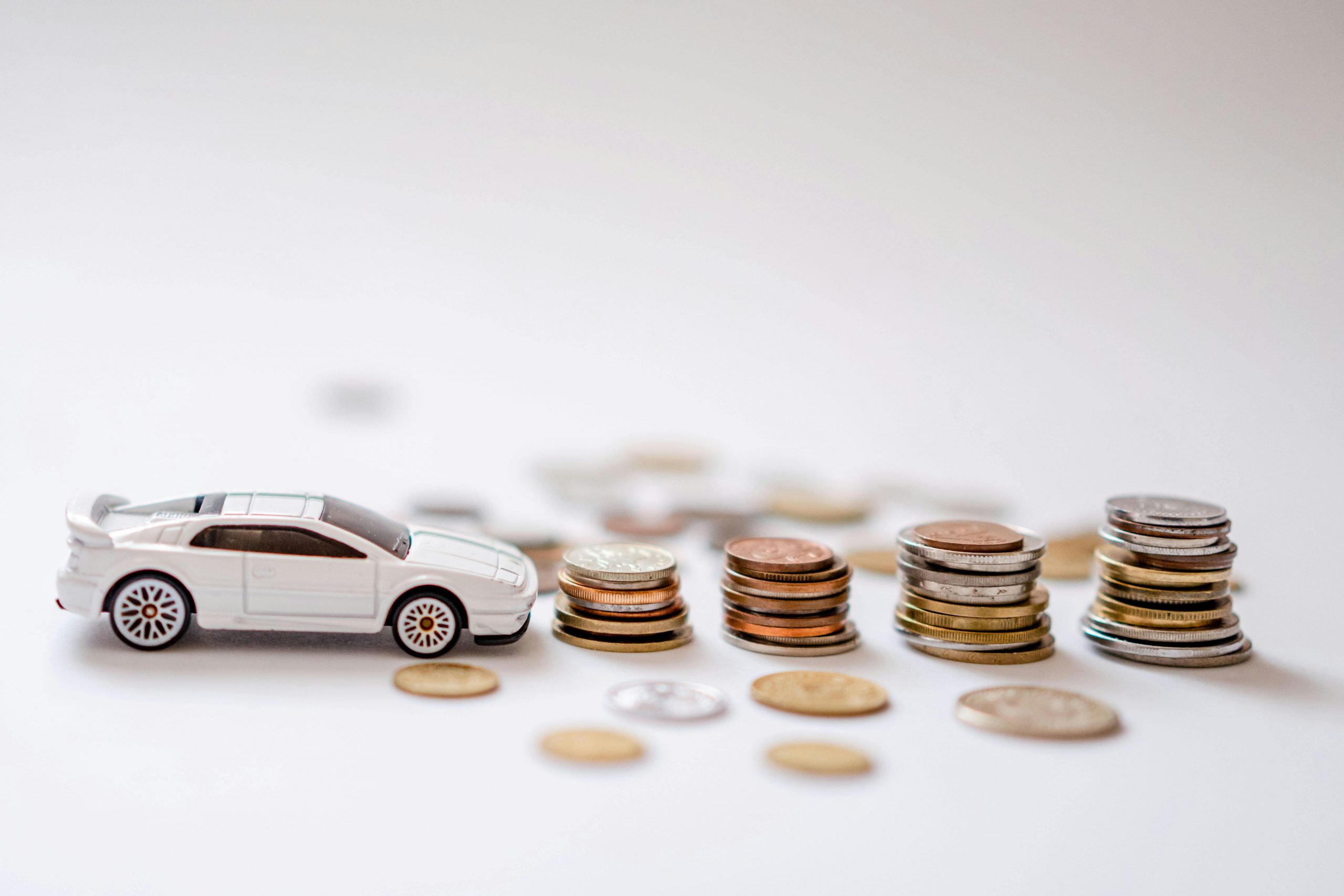
Buying a car is one of the biggest financial milestones in many people’s lives. But while it might feel easy to walk into a dealership and drive away with a new ride, the long-term costs of car loans can trap you in debt before you even know what hit you.
The debt trap is real. Hidden interest rates, long-term loan agreements, and sneaky dealership upsells can turn your new car into a financial burden. But here’s the good news: there is a better way. You can save for a car instead and keep your financial future intact.
Let’s break down why saving is smarter, how to do it step-by-step, and how to avoid the common traps that push people into auto loan debt.
What Is the Debt Trap, and Why Is It So Common?

A debt trap happens when borrowing money leads to a cycle of more borrowing, higher interest payments, and shrinking savings. With cars, this trap is especially easy to fall into—and harder to escape from—because of how car loans are structured and marketed.
Here’s how it typically plays out:
You take out a loan for more than you can comfortably afford.
Dealerships often encourage buyers to look at monthly payments instead of the total cost. This can lead you to buy a car that stretches your budget way too thin.
You agree to a long-term loan (usually 6-8 years).
This lowers your monthly payments but drastically increases the total amount you pay over time due to compounding interest.
You pay thousands in interest over the life of the loan.
Even a modest interest rate can add thousands of dollars to the total cost. For example, a $25,000 car with a 7-year loan at 6% interest could cost you more than $30,000 when all is said and done.
The car rapidly depreciates.
New cars lose about 20% of their value in the first year alone. By the time you’re halfway through the loan, the car may be worth far less than what you still owe.
You end up underwater on the loan.
This means you owe more on the car than it’s worth. If you need to sell the vehicle or it gets totaled in an accident, your insurance may not cover the full loan balance.
And here’s where it gets even riskier:
If something unexpected happens—like losing your job, facing medical bills, or dealing with a costly emergency—you’re locked into that loan. Missing payments can hurt your credit score or even result in repossession. Once that spiral begins, it becomes much harder to climb out without borrowing again, pushing you deeper into the cycle.
The auto industry, marketing tactics, and even peer pressure to “drive something nice” all contribute to how common this debt trap is. But being aware of how it works is the first step toward avoiding it entirely.
Can You Really Save Up for a Car Without Borrowing?
Absolutely. Many people think it’s impossible to buy a car without a loan, but that’s largely due to car marketing and cultural habits.
Here’s the truth: saving up for a car is entirely doable with a focused plan and realistic goals. It might take longer than signing loan paperwork, but it puts you in control and saves you money in the long run.
Plus, you can still buy a reliable, fuel-efficient car even if it’s used or not brand new. Saving for a car doesn’t mean sacrificing quality—it means making smarter choices.
Step-by-Step: How to Save for a Car and Avoid the Debt Trap

If you want to skip the endless cycle of loans and interest, the smartest move is to save up before you buy. Here’s a clear, doable roadmap that helps you plan, save, and drive away without debt.
1. Set a Realistic Car Budget
Before you start saving, it’s critical to know what you’re actually saving for. Too many people get into trouble by underestimating the true cost of owning a car or dreaming too big. A budget keeps your expectations grounded in reality.
Here’s how to create one:
- Decide between new vs. used
- New cars lose value the moment you drive them off the lot—often 20–30% in the first year alone.
- A used car (especially 2–4 years old) offers significant savings while still being reliable.
- Factor in total ownership costs
Don’t just save for the sticker price. Make room in your budget for:- Sales tax (varies by location)
- Registration and title fees
- Insurance premiums (higher for newer or financed cars)
- Regular maintenance (oil changes, brake pads, tires)
- Potential repairs or upgrades (new battery, tires, etc.)
- Avoid premium trims and upgrades
That sunroof or fancy tech package might look tempting, but they can add thousands to your final price without improving the basic function of the vehicle. - Follow the 20/4/10 rule (if financing)
- Put down at least 20%
- Finance the car for no more than 4 years
- Keep total monthly transportation costs under 10% of your gross income
- Even if you’re planning to pay in cash, this rule is a great benchmark to keep your total budget under control.
2. Open a Separate Car Savings Account
A dedicated account for your car fund prevents your savings from mixing with your everyday spending money. Plus, a high-yield savings account (HYSA) can help you earn interest along the way.
Here’s what to look for:
- No monthly fees: Avoid paying to save. Plenty of online banks offer no-fee accounts.
- Competitive interest: Look for a HYSA with at least 2% APY or higher. This helps your money grow passively.
- Online access: Make sure it’s easy to transfer money in—but not too easy to transfer it out. Some people choose accounts that take a day or two to withdraw from to reduce the temptation to dip into it.
Tip: Name the account something specific like “Car Freedom Fund” to keep your goal top of mind every time you check it.
3. Automate Your Savings
Saving works best when you don’t have to think about it. Set up automatic transfers from your checking account to your car fund every payday. This makes saving a habit and removes the need for constant self-control.
Here’s how different weekly amounts can add up:
| Weekly Savings | Monthly Total | Annual Total |
| $50 | ~$200 | $2,600 |
| $75 | ~$300 | $3,900 |
| $100 | ~$400 | $5,200 |
| $150 | ~$600 | $7,800 |
- If you get paid biweekly, just split the amount over two transfers.
- If your income varies, set a minimum amount and make extra contributions when you can.
Pro tip: Treat this like a bill you must pay. You’re just paying yourself first.
4. Cut Expenses to Boost Savings
To save more, you don’t always need to earn more—you might just need to spend smarter. Small lifestyle changes can lead to hundreds in savings each month.
Here are areas where many people find easy wins:
- Food & dining
- Cook at home more often
- Make coffee at home
- Pack lunches for work
- Subscriptions
- Cancel what you don’t watch or use
- Share streaming plans (where allowed)
- Downgrade premium services temporarily
- Groceries
- Switch to lower-cost grocery stores like Aldi
- Use store brands instead of name brands
- Meal plan to avoid food waste
- Sell unused items
- Clothes you no longer wear
- Old electronics
- Furniture or décor collecting dust
Even if you only free up $150/month, that’s $1,800 a year toward your car.
5. Use Windfalls and Side Hustle Income
One of the fastest ways to hit your car savings goal is to throw any “extra” money into your fund. Instead of splurging, let surprise cash speed up your journey.
Sources of extra cash can include:
- Tax refunds
- Work bonuses
- Holiday or birthday money
- Selling on Facebook Marketplace, Craigslist, or eBay
- Part-time freelance work
- Weekend side hustles (rideshare driving, tutoring, pet sitting)
Mindset tip: Every dollar earned outside your regular paycheck is a gift—use it to buy your freedom from car debt.
How Long Will It Take to Save for a Car?
That depends on three main things:
- The total amount you need
- Are you saving $6,000 for a used car or $15,000 for a newer one?
- Your monthly saving power
- Can you realistically set aside $200/month, or $600?
- How flexible your timeline is
- Are you trying to buy in 6 months, or is 2 years okay?
Sample goal breakdown:
| Car Budget | Monthly Savings | Time Needed |
| $8,000 | $500 | 16 months |
| $10,000 | $400 | 25 months |
| $12,000 | $600 | 20 months |
If your timeline is long, you have more breathing room. If you’re in a rush, you may need to increase savings or lower the car budget.
What If You Need a Car Sooner?
Life doesn’t always wait for your savings plan. If your car breaks down or you suddenly need a vehicle, here are smart ways to bridge the gap without jumping into a debt trap:
- Buy a cheap “beater” car: These are older cars ($2,000–$3,500) that may not look great, but run reliably for a year or two.
- Borrow a family member’s spare car: If someone you trust has an unused vehicle, see if you can borrow or lease it temporarily.
- Use alternative transportation
- Public transit
- Biking
- Ridesharing (Uber/Lyft) if your commute is short
- Carpooling with coworkers
These short-term fixes help you avoid long-term regret.
Common Mistakes to Avoid When Saving for a Car
Even with good intentions, it’s easy to fall into certain traps. Keep your eyes open for these mistakes:
- Saving with no clear goal: If you don’t have a dollar target, it’s harder to stay motivated. Pick a number and set your sights on it.
- Raiding your car fund for other things: Emergencies happen, but try to have a separate emergency fund so your car savings stay untouched.
- Overestimating what you need: You may want a 4WD SUV, but if you only drive on city streets, a compact car may serve you just fine.
- Skipping the used car market: A well-maintained used car with low mileage can save you thousands and still last years.
- Forgetting to factor in the true cost: That low sticker price might come with high insurance or frequent repairs. Research before you buy.
Should You Ever Consider Financing a Car?
In some cases, yes—but only if:
- You’ve saved a large down payment (20%+)
- You can get a low interest rate (under 4%)
- You keep the loan term short (under 4 years)
- You have a strong credit score
Even then, you should ask yourself: Do I want to owe money every month for years?
Cash is still king. Paying in full gives you peace of mind and true ownership.
The Bottom Line: Freedom Beats Flash
We get it—it’s tempting to drive off the lot in a brand-new vehicle with that fresh-car smell. But if it means spending years in debt and paying thousands in interest, it’s not worth the financial stress.
The debt trap is real, but it’s avoidable. By learning how to save for a car instead, you take control of your money, gain true ownership, and set yourself up for more freedom down the road.
Start small. Save consistently. Stay focused. Your future self (and your wallet) will thank you.

